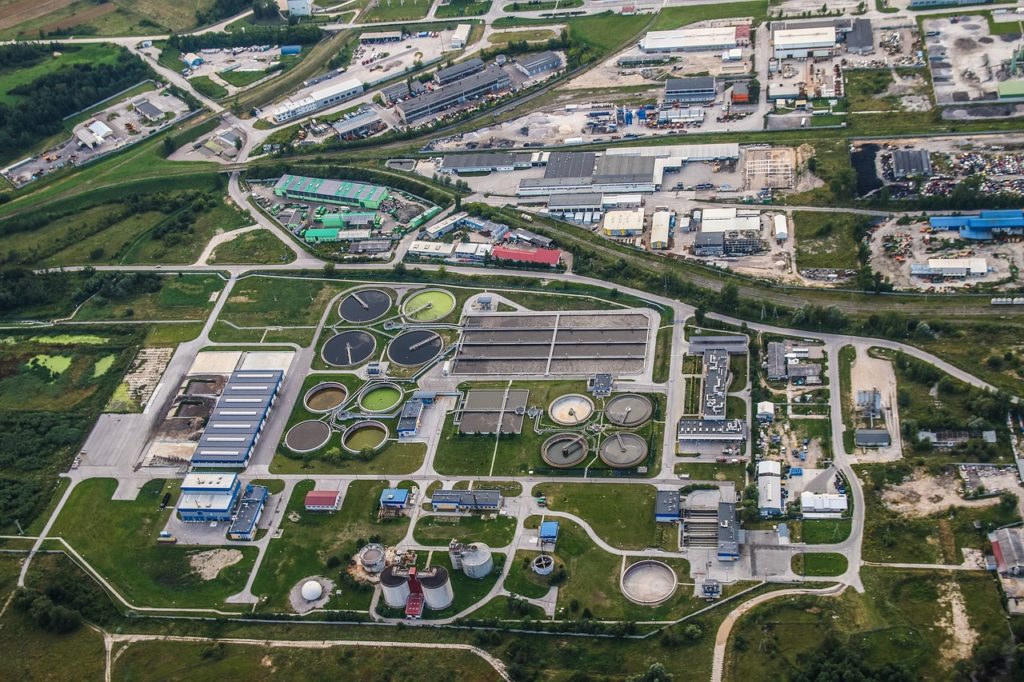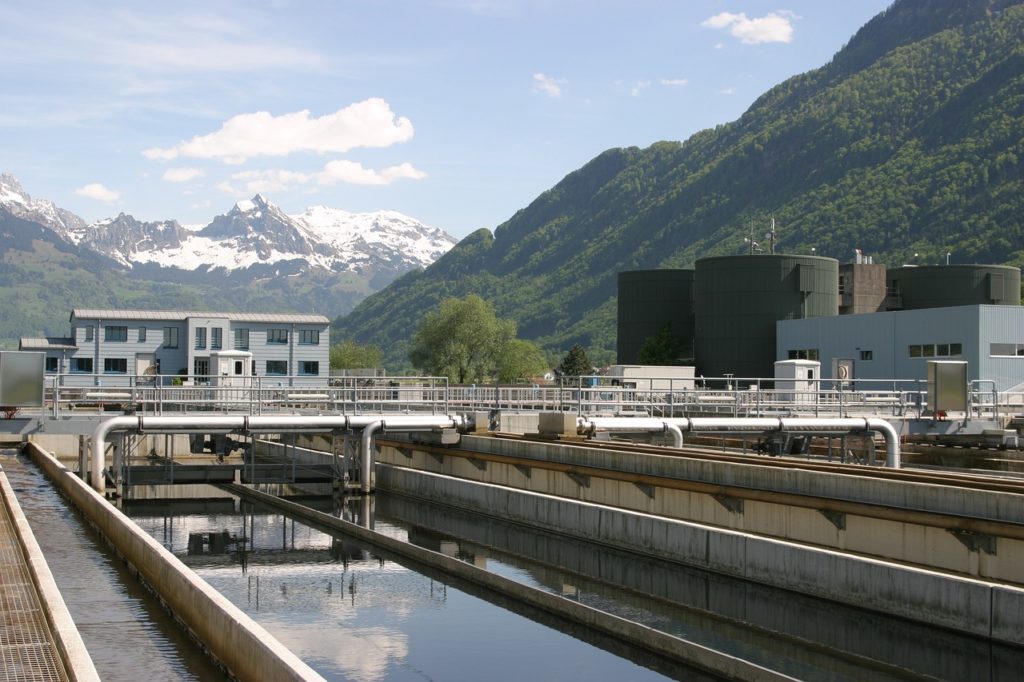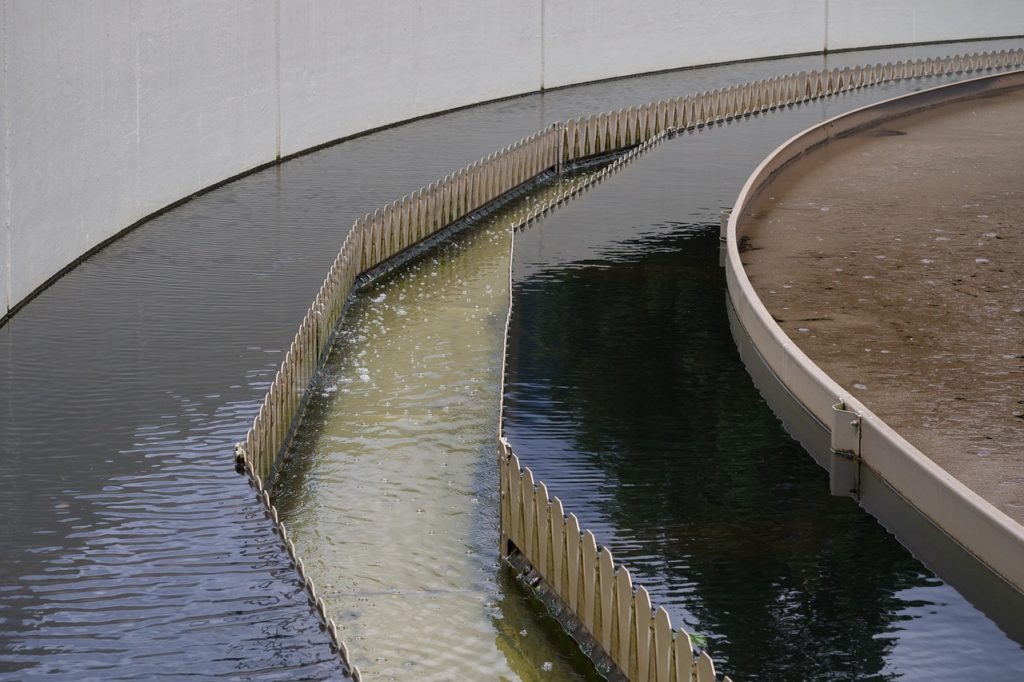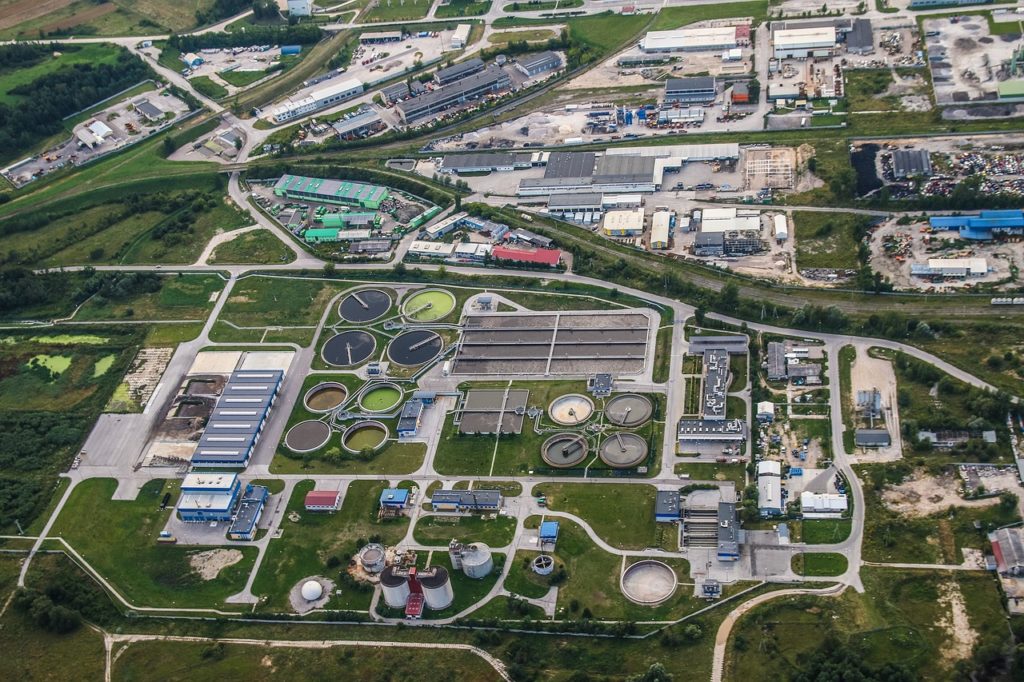In the fascinating world of wastewater treatment, bacteria play a crucial role that often goes unnoticed. These tiny microorganisms, invisible but significant, work tirelessly to break down and remove the pollutants present in the water. From removing organic matter to converting harmful substances into harmless byproducts, bacteria are the unsung heroes of wastewater treatment. By understanding their pivotal role, we can gain invaluable insights into improving and optimizing this essential process. So, let’s dive into the intricate world of bacteria and their extraordinary contributions to wastewater treatment.

I. Introduction
A. Overview of wastewater treatment
Wastewater treatment is a crucial process that ensures the removal of impurities and contaminants from water before it is released into the environment. It involves a series of physical, chemical, and biological processes to purify wastewater and make it safe for reuse or return to natural water bodies. Wastewater treatment plants play a vital role in maintaining public health and protecting the environment by effectively treating wastewater generated from various sources such as households, industries, and agriculture.
B. Importance of understanding the role of bacteria
Bacteria play a fundamental role in the wastewater treatment process. They are microscopic organisms that possess the ability to break down organic matter and remove harmful pollutants from wastewater. Understanding the role of bacteria in wastewater treatment is essential for optimizing treatment processes, improving efficiency, and ensuring the quality of treated water. Bacteria-driven processes are the driving force behind the biological treatment stages in wastewater treatment plants and are crucial for the overall success of the treatment process.
II. Bacteria in Wastewater Treatment Processes
A. Bacteria in primary treatment
In the primary treatment phase, large solid particles and debris are removed from wastewater through physical processes such as sedimentation and filtration. Bacteria are present in this stage, but their role is minimal compared to the later stages of treatment. They mainly aid in the degradation of some organic matter present in the wastewater. However, the primary focus of bacterial activity comes into play during the secondary treatment phase.
B. Bacteria in secondary treatment
During the secondary treatment phase, organic matter and dissolved substances that remain from the primary treatment are further broken down by bacteria. The two primary processes involved in this stage are the activated sludge process and trickling filter process. In the activated sludge process, bacteria are suspended in the wastewater and consume the organic matter, converting them into harmless byproducts. In the trickling filter process, bacteria grow on a medium, such as rocks or plastic, where the wastewater is sprayed or poured over. The bacteria attached to the medium degrade the organic matter in the wastewater through biochemical reactions.
C. Bacteria in tertiary treatment
Tertiary treatment is the final stage of wastewater treatment, where any remaining impurities are removed to ensure the highest level of water quality. Bacteria play a role in this stage as well, primarily in processes such as nutrient removal, disinfection, and filtration. Bacteria assist in removing excess nutrients, such as nitrogen and phosphorus, which if left untreated, can cause ecological imbalances in receiving water bodies. Additionally, bacteria aid in the disinfection process by further reducing pathogens and microorganisms that may still be present in the treated wastewater. Finally, filtration is performed to remove any remaining solids or contaminants, with bacteria helping to break down and remove these particles.

III. Primary Treatment
A. Sedimentation
Sedimentation is a physical process in primary treatment where the wastewater is held in large tanks, allowing heavy solid particles to settle to the bottom due to gravity. This process helps in removing larger solid materials, such as sand, gravel, and organic debris. While bacteria are present in this stage, their role is limited to the degradation of some organic matter, as most of the bacterial activity occurs in the subsequent stages.
B. Filtration
Filtration is another important step in the primary treatment phase, where wastewater is passed through filters to remove finer solid particles that may have escaped sedimentation. These filters can be composed of sand, activated carbon, or other porous materials. Bacteria present in the wastewater may aid in the decomposition of some organic matter during this process, although their impact is minimal compared to secondary and tertiary treatment stages.
C. Disinfection
In some wastewater treatment plants, disinfection is carried out as part of the primary treatment stage to reduce the number of pathogens present in the wastewater. Although bacteria play a minimal role in this stage, it is important to ensure that the disinfection process does not adversely affect the bacterial populations responsible for the subsequent treatment processes.
IV. Secondary Treatment
A. Activated Sludge Process
The activated sludge process is one of the most widely used biological treatment methods in wastewater treatment plants. In this process, bacteria are suspended in the wastewater and continuously agitated to ensure maximum contact with the organic matter. As the bacteria consume the organic compounds, they convert them into carbon dioxide, water, and other harmless products. The effluent from the activated sludge process undergoes further treatment to remove any remaining solids, ensuring a high-quality treated effluent.
B. Trickling Filter Process
The trickling filter process involves the use of a bed of rocks or plastic media, which serves as a surface for the growth of bacteria. Wastewater is continuously trickled over the media, allowing the bacteria to attach and degrade the organic matter present in the wastewater. The trickling filter process is an effective method for reducing organic content and improving water quality. The effluent from this process is then directed to further treatment to remove any remaining suspended solids.
C. Rotating Biological Contactors
Rotating Biological Contactors (RBCs) are another type of biological treatment system used in wastewater treatment plants. RBCs consist of a series of slowly rotating discs that are partially submerged in the wastewater. As the discs rotate, bacteria attached to the surface come into contact with the wastewater, breaking down organic matter and enhancing the treatment process. The treated wastewater is then subjected to additional processes to ensure the removal of any remaining contaminants.

V. Tertiary Treatment
A. Nutrient Removal
Nutrient removal is a critical aspect of tertiary treatment, aimed at reducing excess nitrogen and phosphorus that can cause ecological problems if released into natural water bodies. Bacteria play a vital role in this process, contributing to both nitrification and denitrification. Nitrification involves the conversion of ammonia into nitrate through the action of bacteria that perform aerobic metabolism. Denitrification, on the other hand, is an anaerobic process where bacteria convert nitrate into nitrogen gas, effectively removing nitrogen from the wastewater.
B. Disinfection
In tertiary treatment, disinfection is performed to eliminate any remaining pathogens and microorganisms from the treated wastewater. Although chemical disinfectants such as chlorine or ultraviolet light are primarily responsible for this process, bacteria can aid by consuming any organic matter that might contribute to the regrowth of undesirable microorganisms.
C. Filtration
Filtration is the final step in tertiary treatment, aimed at removing any remaining suspended solids or fine particulate matter. Bacteria indirectly contribute to this process by helping to break down and remove particles that may pass through the filtration media. This ensures that the final effluent is of high quality and meets the required standards before being discharged or reused.
VI. Microbial Processes in Wastewater Treatment
A. Aerobic processes
Aerobic processes involve the breakdown of organic matter in the presence of oxygen. Bacteria that thrive in aerobic conditions are responsible for the degradation of organic compounds, converting them into carbon dioxide and water. These processes are commonly employed in wastewater treatment plants, as they are highly efficient in reducing organic pollution and improving water quality.
B. Anaerobic processes
Anaerobic processes occur in the absence of oxygen and rely on bacteria that are capable of utilizing alternative electron acceptors, such as nitrate or sulfate. These bacteria break down organic matter in a series of biochemical reactions, producing methane, carbon dioxide, and other byproducts. Anaerobic processes are valuable for the treatment of high-strength organic waste and can be applied in specific treatment stages where anaerobic conditions are optimized.
C. Facultative processes
Facultative processes can occur under both aerobic and anaerobic conditions, depending on the availability of oxygen. Bacteria displaying facultative behavior can switch between the two metabolic pathways, allowing them to thrive and adapt in various treatment environments. These bacteria play a significant role in the overall treatment process and contribute to the degradation of organic matter under different conditions.
VII. Role of Bacteria in Nutrient Removal
A. Nitrification
Nitrification is the process by which bacteria convert ammonia to nitrate, a less harmful form of nitrogen. This two-step process involves the oxidation of ammonia to nitrite and subsequently the oxidation of nitrite to nitrate. Bacteria capable of nitrification play a crucial role in wastewater treatment by removing excess nitrogen, which can be detrimental to ecosystems if discharged into natural water bodies. Understanding and optimizing nitrification processes are essential to ensure efficient removal of nitrogen compounds from wastewater.
B. Denitrification
Denitrification is the biological reduction of nitrate to nitrogen gas under anaerobic conditions. Bacteria involved in denitrification utilize nitrate as an electron acceptor instead of oxygen, converting it into nitrogen gas and releasing it back into the atmosphere. Denitrification is an essential process for the removal of nitrogen from wastewater, particularly in cases where stringent nitrogen effluent limits must be met. Proper management of denitrification processes is crucial to prevent excessive nitrogen discharge and potential environmental damage.
C. Phosphorus removal
Phosphorus removal is another vital aspect of wastewater treatment, as excessive phosphorus can lead to eutrophication of water bodies and adversely impact aquatic ecosystems. Bacteria involved in phosphorus removal can perform various mechanisms, such as the uptake of phosphorus into their cells or the precipitation of phosphorus as insoluble compounds. These processes aid in reducing phosphorus levels in treated wastewater, ensuring that it meets regulatory requirements and avoids detrimental environmental impacts.
VIII. Biological Sludge Management
A. Sludge digestion
Sludge digestion is a biological process that breaks down organic matter in wastewater treatment plant sludge, resulting in the production of biogas and a more stable, less odorous material. Bacteria play a crucial role in this process as they decompose the organic solids, converting them into simpler compounds. The produced biogas, primarily consisting of methane and carbon dioxide, can be utilized to generate renewable energy. Effective sludge digestion is vital for the efficient management of wastewater treatment plant sludge and the sustainable operation of the treatment facility.
B. Sludge dewatering
Sludge dewatering is a process that removes water from the sludge, reducing volume and facilitating its further handling and disposal. Bacteria indirectly contribute to sludge dewatering through the breakdown of organic matter, which enhances the dewatering process. By removing excess water, sludge becomes more manageable and can be treated or disposed of in a more cost-effective and environmentally friendly manner.
C. Sludge disposal
Proper sludge disposal is crucial to prevent environmental contamination and ensure sustainable treatment plant operations. Bacterial activity plays a crucial role in determining the quality and stability of the treated sludge, as well as its potential for reuse. The appropriate handling, treatment, and disposal of sludge are essential to prevent any adverse effects on soil, water, or air quality, while also promoting the beneficial utilization of sludge as a fertilizer or soil amendment.
IX. Challenges in Bacterial Wastewater Treatment
A. Toxic pollutants
The presence of toxic pollutants in wastewater poses significant challenges to bacterial wastewater treatment processes. Certain chemicals and contaminants can inhibit or even kill the bacteria responsible for the degradation of organic matter. Efforts are being made to develop strategies and technologies to mitigate the negative impacts of toxic pollutants on bacterial populations, ensuring efficient wastewater treatment even in the presence of harmful substances.
B. Antibiotic resistance
Antibiotic resistance in bacteria is a growing concern worldwide, including in wastewater treatment plants. The continuous exposure of bacteria to low levels of antibiotics in wastewater can lead to the emergence and spread of antibiotic-resistant strains. This poses risks not only in terms of human health but also for the efficacy of bacterial processes in wastewater treatment. Research and monitoring efforts are being undertaken to better understand the occurrence and transmission of antibiotic resistance in wastewater microbial communities, enabling better management strategies.
C. Competition among bacteria
Competition among bacteria can affect the performance of wastewater treatment processes. The presence of different bacterial species with varying metabolic capabilities and resource requirements can lead to complex microbial dynamics. Understanding the interactions and competition between bacterial populations in wastewater treatment systems is important for optimizing process efficiency and ensuring stable treatment performance.
X. Future Directions and Research
A. Technologies for enhancing bacterial wastewater treatment
Ongoing research and development efforts are focused on developing innovative technologies to enhance bacterial wastewater treatment processes. Advanced treatment technologies such as membrane bioreactors, sequencing batch reactors, and biofilm reactors are being explored to improve treatment efficiency, reduce energy consumption, and optimize process control. Additionally, novel approaches involving the use of bioelectrochemical systems, microbial fuel cells, and artificial intelligence are being investigated to further enhance the performance of bacterial wastewater treatment.
B. Understanding the microbiome of wastewater treatment plants
The study of the microbiome, the collection of microorganisms and their genetic material in an environment, is gaining significant attention in the field of wastewater treatment. By understanding the microbial communities present in wastewater treatment plants, their composition, and their functional potential, researchers can identify key microbial players and their roles in various treatment processes. This knowledge can lead to the development of targeted strategies to improve treatment efficiency, resilience, and the overall performance of wastewater treatment systems.
C. Role of bacteriophages in wastewater treatment
Bacteriophages, viruses that infect and replicate within bacteria, have gained interest as potential tools in wastewater treatment. Research is being conducted to explore their role in controlling bacterial populations, especially those that are detrimental or pose challenges in treatment processes. Bacteriophages have the potential to specifically target and eliminate harmful bacteria, reducing the reliance on chemical disinfection methods and promoting a more sustainable approach to wastewater treatment.
In conclusion, bacteria play a vital role in wastewater treatment by breaking down organic matter, removing nutrients, and reducing pathogens to produce clean and safe water for reuse or release into natural water bodies. Understanding the role of bacteria in different treatment processes is crucial for optimizing treatment efficiency, addressing challenges, and developing innovative solutions for sustainable wastewater management. Ongoing research and technological advancements continue to enhance bacterial wastewater treatment, ensuring the protection of public health and the environment.

